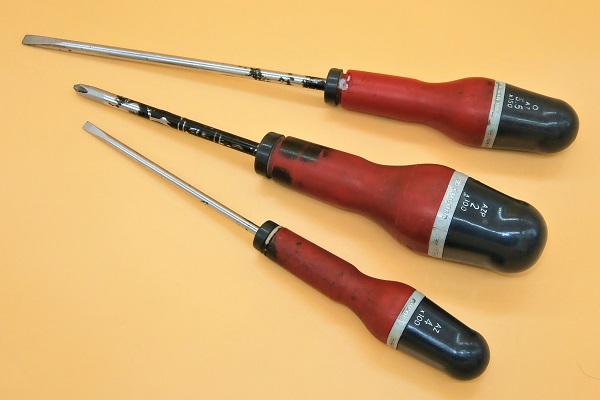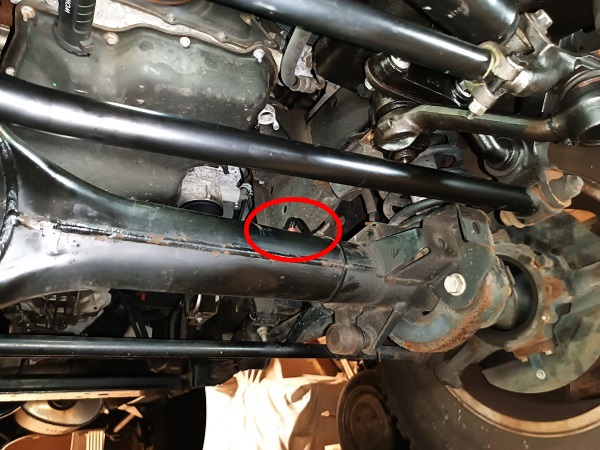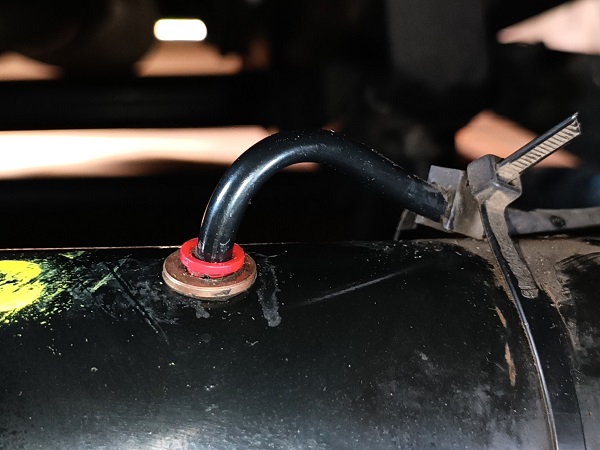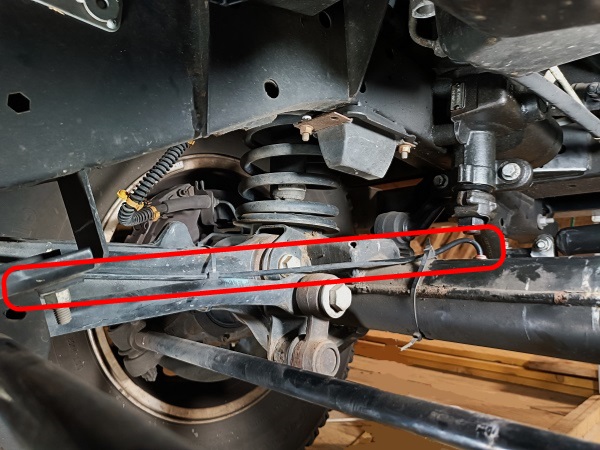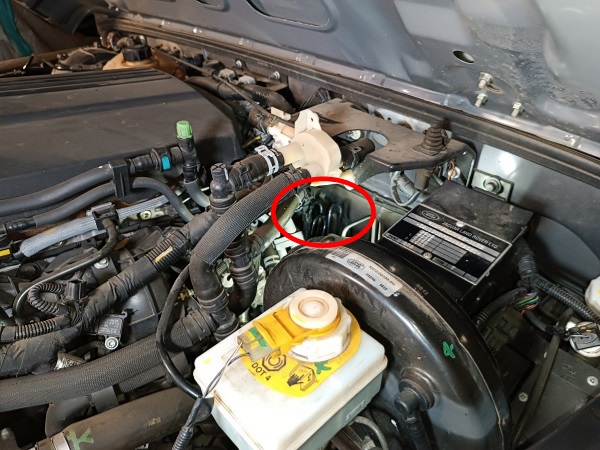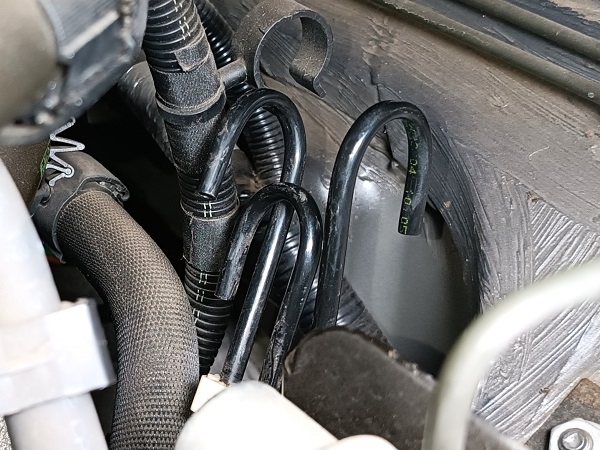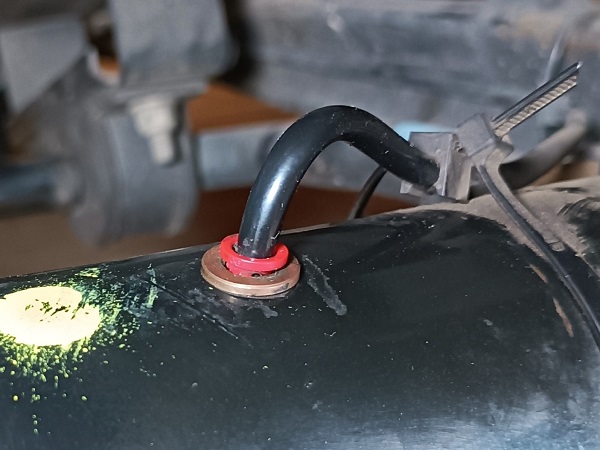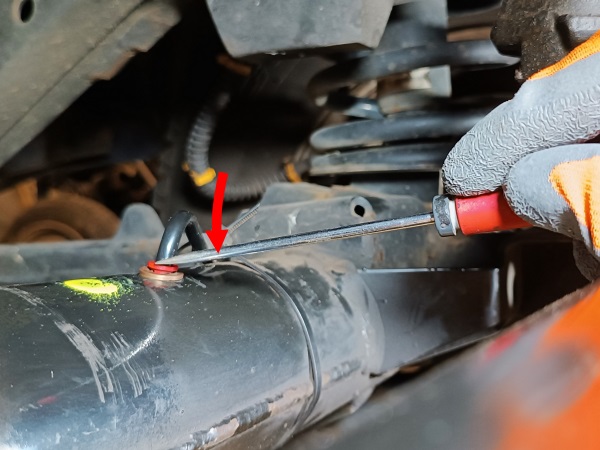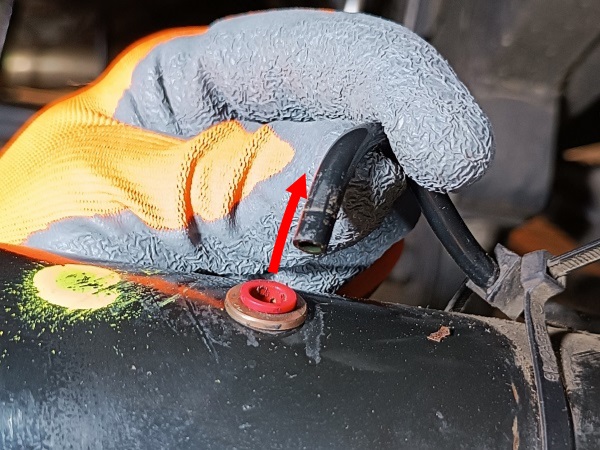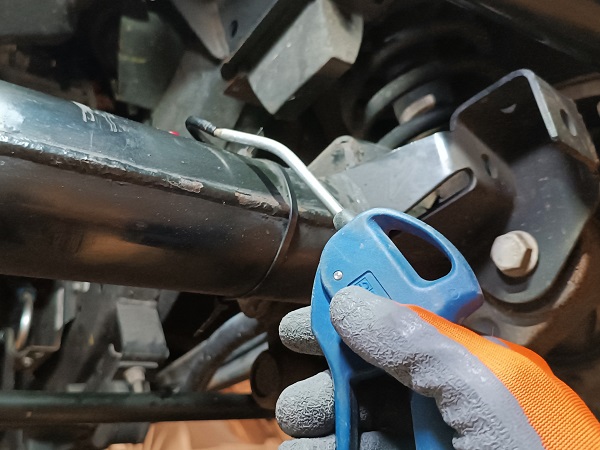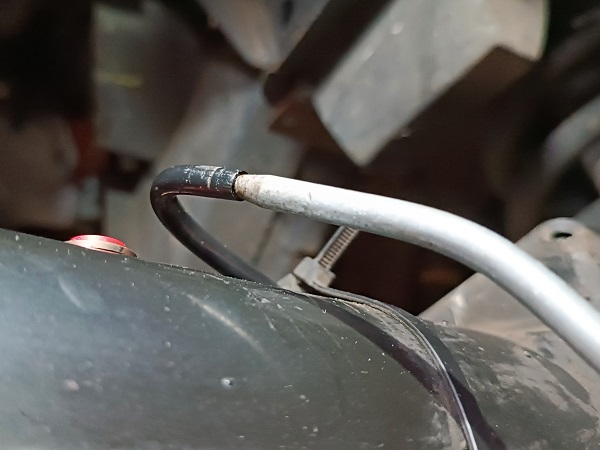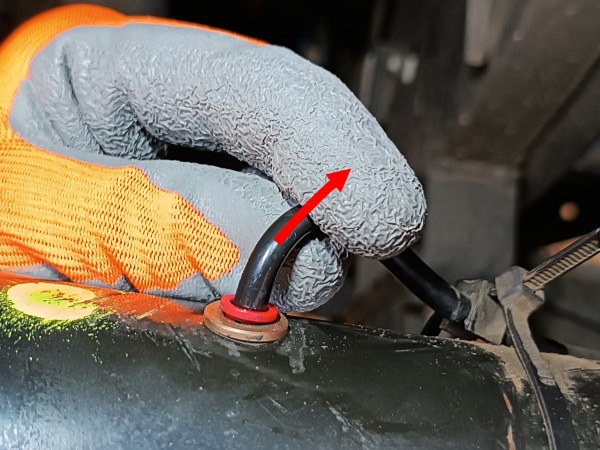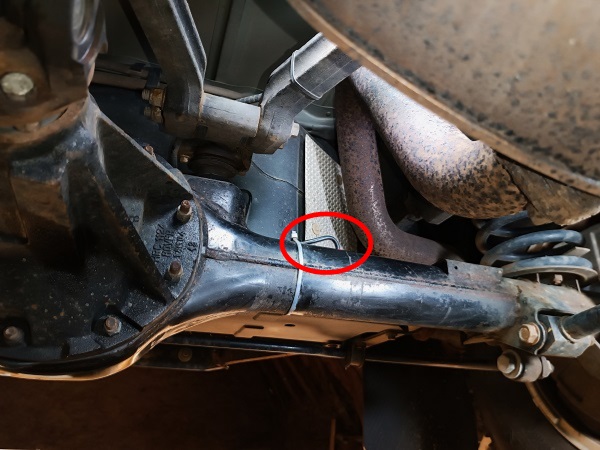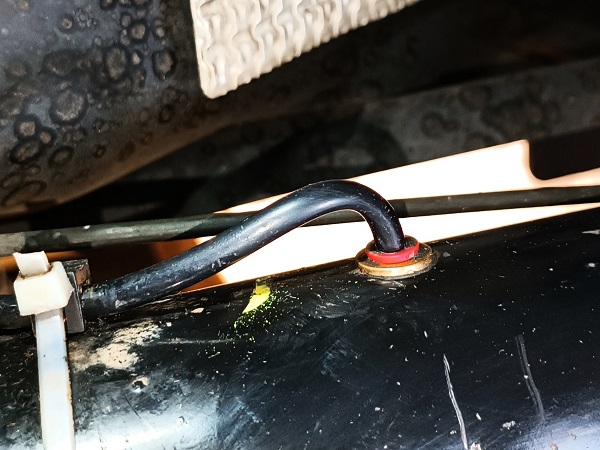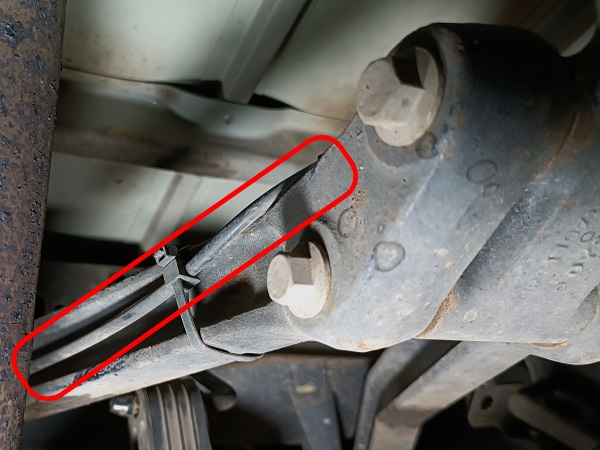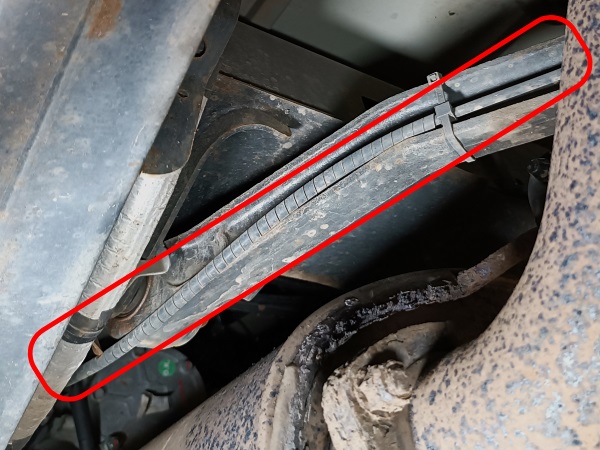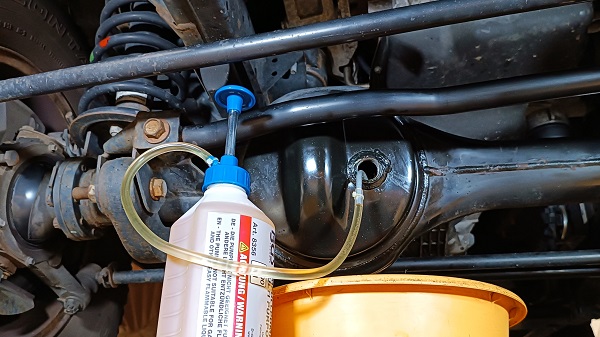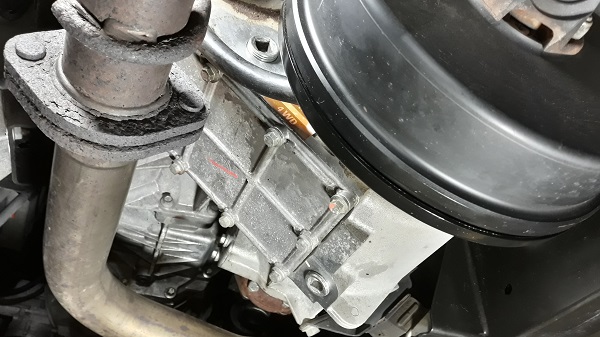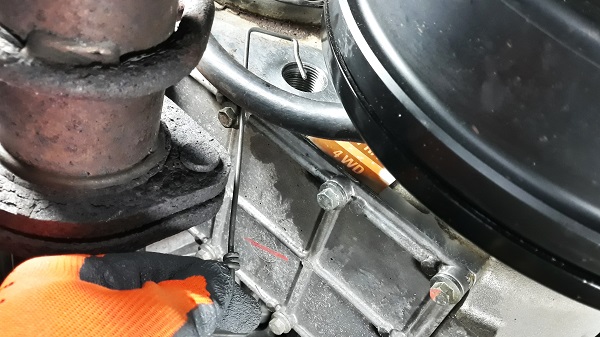Unblocking the axles breather pipes on Defender 90 Td4
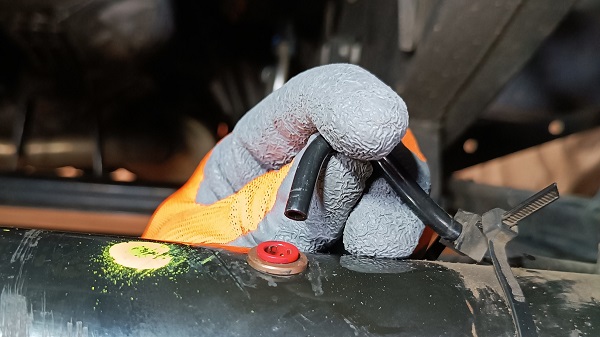
Vehicle ➔ Defender 90 Td4 2013
Difficulty ➔ Easy

Time ➔ 30 minutes
Summary

When the Defender is driving, the oil and air contained in the axles heat up and expand. The breather pipes allow excess air to escape. If this air was not evacuated, the overpressure would generate oil leaks at the differential flange and driveshafts seals.

During our off-road trips in mud or dusty atmospheres, the breather pipes tend to become clogged. When draining the axles, while we are under the Defender, we might as well take the opportunity to blow them out.
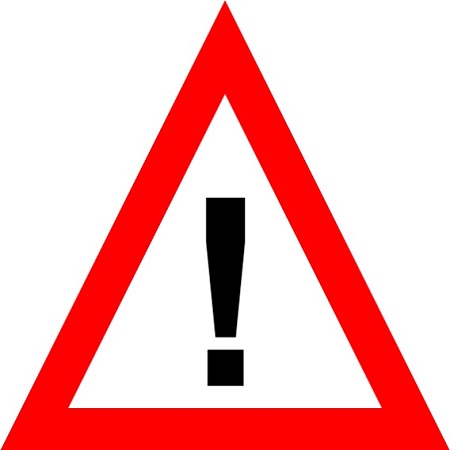
Never blow into a breather pipe towards the axle. You could push the dirt contained in the pipe towards the axle.

When writing this tutorial, we used a compressor to unclog the breather pipes. If you do not have a compressor, you can use a piano wire or a bicycle brake cable.
Advertisement
Unclog the front axle breather pipe
Op 01
Locate where the front axle breather pipe is.

The pipe is connected by an adaptor on top of the front axle (2nd photo). It then runs along the axle (3rd photo) and then goes up between the engine and the bulkhead on the LH side (4th photo).

There are 3 breather pipes that arrive in front of the bulkhead : front axle, rear axle and transfer box.
Op 02
Clean the 3 breather pipes at the bulkhead level. Use a cloth.
Op 03
Disconnect the breather pipe from the front axle :
•
Clean around the pipe adaptor. Use a cloth.
•
Press the red collar of the adaptor. Use a flathead screwdriver.
•
Remove the pipe. Pull by hand.
Op 04
Blow into the breather pipe. Use a compressor and an air gun.

The dirt contained in the pipe should be evacuated.
Op 05
Connect the breather pipe to the axle. Simply push by hand.

Once connected, pull lightly on the pipe to check that it is properly locked in the fitting (3rd photo).
Advertisement
Unclog the rear axle breather pipe
Op 06
Unclog the rear axle breather pipe. Proceed in the same way as for the front axle pipe.

The pipe is connected by an adaptor on top of the rear axle (2nd photo). It then runs along the rear suspension top link (3rd and 4th photo) then along the chassis and finally, it goes up between the engine and the bulkhead on the LH side.
The End





